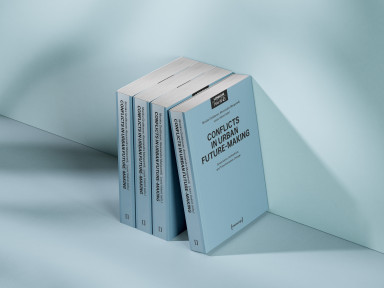Conflicts in urban future-making: Governance, institutions, and transformative change
Editors: Monika Grubbauer, Alessandra Manganelli, Louis Volont
Under conditions of heightened uncertainty, cities face enormous challenges in responding to contemporary crises. The contributors to this volume explore the conflictual dynamics that arise when urban futures are imagined, negotiated, and materialized. Through the lens of urban future-making, they provide a timely analysis of the conflicts that shape planning projects, architectural interventions, and new experiments in the built environment. Their analyses show how urban future-making is conditioned by conflicting governance arrangements, actor constellations, and power dynamics – offering rich insight into the critical role of professionals as key agents of urban transformation.

More information
https://www.transcript-verlag.de/978-3-8376-7467-5/conflicts-in-urban-future-making/